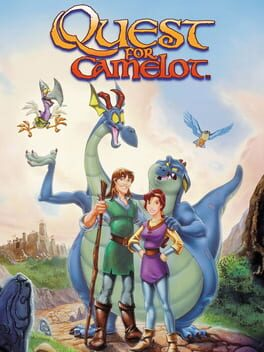Trivia Browser
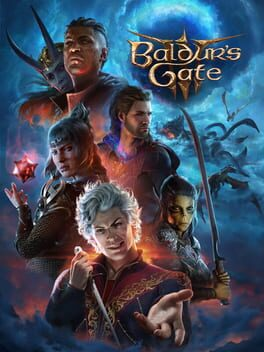
▲
5
▼
Baldur's Gate 3 was originally revealed with a CGI trailer at a conference for the Google Stadia cloud gaming service in June 2019 as part of an Early Access exclusivity deal that would ultimately be cancelled when Stadia was shut down in 2023. The game's director Swen Vincke touted the service at the time for its purported accessibility, and the potential for in-game community feedback to directly affect the game's development and playthroughs via Stadia's Crowd Choice feature. However, Vincke later expressed regret over having the game be revealed this way, calling it "a really stupid deal" due to the challenges of releasing an Early Access build to a second platform, but that "it allowed me to pay for the CGI."
Baldur's Gate 3 Stadia Announcement:
https://www.ign.com/articles/2019/06/06/baldurs-gate-3-officially-announced-for-pc-and-google-stadia
Stadia-Exclusive Features:
https://www.ign.com/articles/baldurs-gate-3-stadia-exclusive-features-early-access-contents-release
Stadia Reveal Regret:
https://www.ign.com/articles/larian-founder-on-working-with-google-stadia-for-baldurs-gate-3-it-was-a-really-stupid-deal
https://www.ign.com/articles/2019/06/06/baldurs-gate-3-officially-announced-for-pc-and-google-stadia
Stadia-Exclusive Features:
https://www.ign.com/articles/baldurs-gate-3-stadia-exclusive-features-early-access-contents-release
Stadia Reveal Regret:
https://www.ign.com/articles/larian-founder-on-working-with-google-stadia-for-baldurs-gate-3-it-was-a-really-stupid-deal

▲
5
▼
 The translation group RPGe's 1998 English translation of Final Fantasy V is considered to be one of the most widely-played and influential fan translations in video game history. It gained this reputation because it released before Squaresoft's first official translation in Final Fantasy Anthology in late 1999, and despite RPGe primarily consisting of inexperienced teenagers, it was regarded as a better translation than the official one, leading many Western players to first experience the game through it.
The translation group RPGe's 1998 English translation of Final Fantasy V is considered to be one of the most widely-played and influential fan translations in video game history. It gained this reputation because it released before Squaresoft's first official translation in Final Fantasy Anthology in late 1999, and despite RPGe primarily consisting of inexperienced teenagers, it was regarded as a better translation than the official one, leading many Western players to first experience the game through it.The first translation attempts stemmed from widespread confusion over Squaresoft not releasing three FF games in the West: Final Fantasy II, Final Fantasy III, and FFV. Their decision to release Final Fantasy VII internationally under its original numbering after Final Fantasy VI was released in the West a few years earlier as the "third" game in the series also contributed to this.
The co-creator of RPGe, named Shadow, was inspired by an incomplete FFII translation by users Demi and Som2freak (the latter having later lent Shadow tools to work on FFV), and started translating FFV by making flashcards for which hex code corresponded to each Japanese and English character in the game's data. He promoted his efforts online using photoshopped FFV images and recruited other users to create RPGe, including translator David Timko, and a computer engineering major named Hooie who also asked Japanese instructors at his university to help translate some enemy names. RPGe's plan was to directly edit their English script into the text files of a ROM of the Japanese version, but their work was slow and tedious due to them having little experience with fan translations and being out of touch with fledgling emulation communities. This lead to technical issues with their text and sprite editing software, and English characters being poorly displayed under conditions that were originally designed for larger Japanese characters. The group also suffered from internal factionalism, and since Shadow promoted himself as the public face of the project, he found that he could not handle the attention and controversy that came from how seriously he took the project and RPGe itself, seeing the translation effort as a vital service to the Squaresoft fan community. After Demi published a lengthy post parodying Shadow, he "snapped" and left RPGe. The co-founders of RPGe would also eventually step down, but other users would take over and start their own work.
A user named Myria, who had argued against RPGe's hex editing approach to no avail, split off from their efforts beforehand to work on a separate translation. Sharing similar setbacks to them, she gradually parsed through the code used to handle the text files, and edited it so it could recognize English characters of different sizes and fit more in a dialogue box. Som2freak helped translate the script for a time, but then left the project after bringing on a new editor, named harmony7, who started heavily revising Som2freak's translations to his chagrin despite seeing several issues with it.
One of the most controversial aspects of the translation was the main character's name. Squaresoft's later English translation named him "Bartz", but RPGe's translation named him "Butz", which many joked sounds like "butts". Myria claimed that Butz was the most accurate translation based on documents and official merchandise using it "the way we'd written it" (for reference, the Romanized version of the Japanese name "バッツ" comes out as "Battsu"). However, Butz is used in real life as an actual German surname with a different pronunciation, the vowel being an "oe" sound like in the English words "put" and "good". Therefore, Bartz would make more sense to match up with the vowels in the Japanese name than Butz, and also fits better as a German first name since Bartz is a pet name for Bartholomäus (Bartholomew).
The bulk of Myria's technical work ended in October 1997, with harmony7 still working to revise the entire script until something unexpected happened. An early version of the fan translation mysteriously appeared on a Geocities website with others taking credit for it. This prompted RPGe to release their work up to that point as "v0.96" on October 17, 1997, with the final patch eventually being released in June 1998. The translation patch received acclaim for its technical aspects and near-professional writing quality, and influenced other players to become translators, including Clyde Mandelin who would later create the English fan translation of Mother 3. Squaresoft never contacted RPGe about the translation, and while their 1999 localization of the game was seen as inferior to RPGe's, Myria would later opine that Square Enix's 2006 localization in Final Fantasy V: Advance was better than theirs. Myria continued hacking and reverse-engineering games and eventually earned a job at an undisclosed major video game company.
2017 Kotaku article:
https://web.archive.org/web/20170428183534/https://kotaku.com/how-three-kids-beat-the-odds-and-translated-final-fanta-1794628286
2021 IGN article:
https://web.archive.org/web/20210508152802/https://www.ign.com/articles/the-untold-drama-and-history-behind-final-fantasy-5s-fan-translation
Butz surname pronunciation:
https://en.wiktionary.org/wiki/Butz#Pronunciation_2
Bartz pet name source from Ancestry.com:
https://www.ancestry.com/name-origin?surname=bartz
Final Fantasy Chrome Figure Collection wiki articles:
https://finalfantasy.fandom.com/wiki/Final_Fantasy_Chrome_Figure_Collection
https://ffmerchandise.fandom.com/wiki/Final_Fantasy_Chrome_Figures_Collection
Ebay listing for Final Fantasy Chrome Figure set including Butz:
https://www.ebay.com/itm/275540207811
https://web.archive.org/web/20170428183534/https://kotaku.com/how-three-kids-beat-the-odds-and-translated-final-fanta-1794628286
2021 IGN article:
https://web.archive.org/web/20210508152802/https://www.ign.com/articles/the-untold-drama-and-history-behind-final-fantasy-5s-fan-translation
Butz surname pronunciation:
https://en.wiktionary.org/wiki/Butz#Pronunciation_2
Bartz pet name source from Ancestry.com:
https://www.ancestry.com/name-origin?surname=bartz
Final Fantasy Chrome Figure Collection wiki articles:
https://finalfantasy.fandom.com/wiki/Final_Fantasy_Chrome_Figure_Collection
https://ffmerchandise.fandom.com/wiki/Final_Fantasy_Chrome_Figures_Collection
Ebay listing for Final Fantasy Chrome Figure set including Butz:
https://www.ebay.com/itm/275540207811

▲
3
▼
 The South Korean version of the game (released two years after the original Japanese edition) contains eleven unused maps not found in any other release, featuring fully 3D environments which do not line up with any locations present in the finished product. All assets related to these maps are dated after the game's Japanese release, with intervals ranging from five days to just over three months. Additionally, the maps' texture names are written in Romanized Japanese rather than Korean, indicating that they were not created by Nintendo of Korea.
The South Korean version of the game (released two years after the original Japanese edition) contains eleven unused maps not found in any other release, featuring fully 3D environments which do not line up with any locations present in the finished product. All assets related to these maps are dated after the game's Japanese release, with intervals ranging from five days to just over three months. Additionally, the maps' texture names are written in Romanized Japanese rather than Korean, indicating that they were not created by Nintendo of Korea.Two of these maps, kri_04 and kri_05, additionally feature various cat NPCs, all drawn in substantially different art styles compared to not only each other, but also the final game. Each one is named after a developer from the Super Paper Mario staff: yamada_neko02 (Koichiro Yamada), koba_neko (Sayuri Kobayashi), tuka_neko (Naoko Tsukamoto), and kawa_neko (Chie Kawabe).
Of these four, kawa_neko is the most unique, and was apparently designed as a player character. Firstly, the cat's name is only given to its mesh, with its sprite instead being named bc_all.1. Additionally, kawa_neko features an animated tail and a mesh that is centered on the ground rather than the middle of the room. Furthermore, new_neko_18, a redesigned version of kawa_neko with white fur instead of black, can be found in kri_08, kri_09, and kri_10; new_neko_18's mesh is explicitly labeled "PLAYER" in the data for these maps.
Taken together, all of these elements imply that these early rooms were created as a proof-of-concept for an original project by Intelligent Systems that ended up cancelled for unknown reasons.
Franchise: Sonic The Hedgehog
▲
3
▼
 Ben Hurst, one of the writers for the 1993 "Sonic the Hedgehog" animated series, attempted to pitch a continuation of the show to Sega in 2002 as either a third season or a movie. He consulted DiC Entertainment, who produced the show (as well as two other Sonic cartoons, "Adventures of Sonic the Hedgehog" and "Sonic Underground"), and was given the name of a Sega executive who wanted to talk with him more about the idea. Hurst then received a call from Ken Penders, at the time the head writer for Archie's Sonic the Hedgehog comics, who had been made aware of Hurst's interest in making a movie based on the series. Hurst offered to include Penders in the project, and told him his strategy for the pitch was to develop a satisfying storyline to conclude the show, and simultaneously giving Sega ideas for new games. This resulted in a long-standing controversy where Hurst claimed that Penders sabotaged his plan by telling Sega that he was trying to co-opt the franchise, resulting in Hurst's dismissal from the project. Over 13 years after Hurst's death, Penders would give his side of the story in a 2023 blog post, claiming that Hurst's joint proposal between the two would involve asking Sega to pay them to produce the series, and doubted that Sega would even schedule a meeting to let them pitch it if Sega funding the pitch was the premise, stating that "the owner of any IP is looking for a payday when it comes to using the rights for their properties."
Ben Hurst, one of the writers for the 1993 "Sonic the Hedgehog" animated series, attempted to pitch a continuation of the show to Sega in 2002 as either a third season or a movie. He consulted DiC Entertainment, who produced the show (as well as two other Sonic cartoons, "Adventures of Sonic the Hedgehog" and "Sonic Underground"), and was given the name of a Sega executive who wanted to talk with him more about the idea. Hurst then received a call from Ken Penders, at the time the head writer for Archie's Sonic the Hedgehog comics, who had been made aware of Hurst's interest in making a movie based on the series. Hurst offered to include Penders in the project, and told him his strategy for the pitch was to develop a satisfying storyline to conclude the show, and simultaneously giving Sega ideas for new games. This resulted in a long-standing controversy where Hurst claimed that Penders sabotaged his plan by telling Sega that he was trying to co-opt the franchise, resulting in Hurst's dismissal from the project. Over 13 years after Hurst's death, Penders would give his side of the story in a 2023 blog post, claiming that Hurst's joint proposal between the two would involve asking Sega to pay them to produce the series, and doubted that Sega would even schedule a meeting to let them pitch it if Sega funding the pitch was the premise, stating that "the owner of any IP is looking for a payday when it comes to using the rights for their properties."In September 2003, Penders pitched his own concept for a Sonic the Hedgehog movie, titled "Sonic Armageddon". Four pieces of concept art were produced, and even a homemade pitch video was made to show to Sega executives. From what is known about the pitch (which seemed to borrow elements from both the 1993 series and the Archie comics), it would have involved the planet Mobius being destroyed and changed the depiction of the roboticization procedure to something much more gruesome than what had been previously seen. Notably, several major characters (such as the Freedom Fighters sans Sonic, Tails and Sally) are not shown in either the pitch video or the concept art, and the characters that are shown are given major redesigns. A common belief is that DreamWorks Animation was Penders' choice to produce the film, but Penders would later state in 2019 that he had pitched the idea to Sega only, and that DreamWorks had no involvement. The film never materialized; Penders would later claim on separate occasions that the idea was dropped because of "massive corporate upheaval", as well as the development of the animated series "Sonic X" affecting talks regarding the film.
Attempted pitch:
https://web.archive.org/web/20201111200242/http://www.sonicsatam.com/information/the-lost-3rd-season/
Hurst's dismissal:
https://web.archive.org/web/20201113070038/https://www.saturdaymorningsonic.com/features/ben_hurst/
Penders on Sonic Armageddon:
https://web.archive.org/web/20201213205554/https://twitter.com/kenpenders/status/1105647131438673920
Penders on the attempted pitch controversy:
https://kenpenders.com/sonic-armageddon-or-what-a-long-strange-journey-its-been/
Pitch video:
https://www.youtube.com/watch?v=DNteN_qlHp0
https://web.archive.org/web/20201111200242/http://www.sonicsatam.com/information/the-lost-3rd-season/
Hurst's dismissal:
https://web.archive.org/web/20201113070038/https://www.saturdaymorningsonic.com/features/ben_hurst/
Penders on Sonic Armageddon:
https://web.archive.org/web/20201213205554/https://twitter.com/kenpenders/status/1105647131438673920
Penders on the attempted pitch controversy:
https://kenpenders.com/sonic-armageddon-or-what-a-long-strange-journey-its-been/
Pitch video:
https://www.youtube.com/watch?v=DNteN_qlHp0
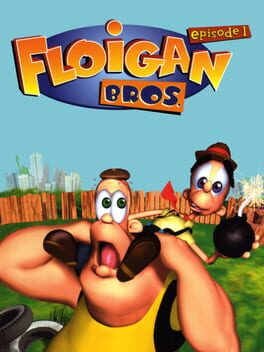
subdirectory_arrow_right Dreamcast (Platform)
▲
3
▼
Despite Floigan Bros. being initially developed prior to the Dreamcast's release in 1999 (of which the main characters Moigle and Hoigle made cameos in the Dreamcast advertising campaign "It's Thinking"), and then-President of SEGA's American division Bernie Stolar saying that "Floigan will do for SEGA what Mario did for Nintendo", the game would go through developmental setbacks until finally releasing on July 30, 2001, months after SEGA ceased production on SEGA Dreamcast.
Because of this late release window, several pieces of monthly on-disc DLC for the game, as well as the concept of exchanging Moigles through the Dreamcast VMU, were left on the cutting room floor.
Because of this late release window, several pieces of monthly on-disc DLC for the game, as well as the concept of exchanging Moigles through the Dreamcast VMU, were left on the cutting room floor.
IGN review briefly mentioning scrapped features:
https://www.ign.com/articles/2001/07/30/floigan-brothers
Fan mod release of on-disc DLC:
https://dreamcastlive.net/blogs/post/floigan-bros-dlc-released/
https://www.ign.com/articles/2001/07/30/floigan-brothers
Fan mod release of on-disc DLC:
https://dreamcastlive.net/blogs/post/floigan-bros-dlc-released/
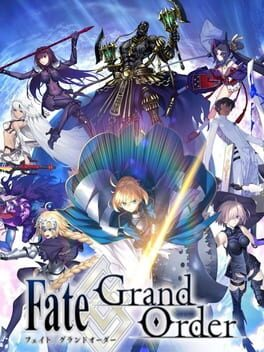
▲
3
▼
The original plan for the game was a PvP, online MMO game known as Fate/Apocrypha. However, these plans were cancelled early in development. The project was later revived as "Fate Online Project Reboot" on the behest of publisher Aniplex wanting to make a mobile game to promote the Fate IP. According to head writer Kinoko Nasu, he never owned a smartphone prior to the development of Fate/Grand Order, but got one and played various free-to-play mobile games for reference. Fate/Apocrypha itself would later be revived as a Light Novel series.
Type Moon Wiki page on Fate/Grand Order development: https://typemoon.fandom.com/wiki/Fate/Grand_Order#Development
Type Moon Wiki page on Fate/Apocrypha development: https://typemoon.fandom.com/wiki/Fate/Apocrypha#Development
Type Moon Wiki page on Fate/Apocrypha development: https://typemoon.fandom.com/wiki/Fate/Apocrypha#Development
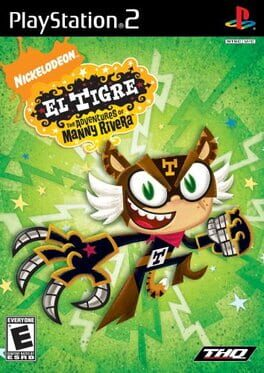
▲
3
▼
El Tigre: The Adventures of Manny Rivera was intended to be developed over a span of 12 months. However, due to the cartoon being abruptly cancelled the game was developed over 2 months instead, with a greatly reduced budget, and a planned Wii version being cancelled.
Franchise: Donkey Kong
▲
3
▼
 Dutch electronics company Philips planned to release a Donkey Kong game for the CD-i as part of the deal with Nintendo that led to the release of Hotel Mario, Link: The Faces of Evil, Zelda: The Wand of Gamelon, and Zelda's Adventure. The Donkey Kong game's existence was alluded to in two "Gaming Gossip" articles by Electronic Gaming Monthly as well as a trade ad which depicted Donkey Kong exiting a limousine alongside Mario, Link, and Zelda. However, more concrete evidence for the game's existence didn't emerge until former Riedel Software Productions employee Adrian Jackson-Jones included a post on his LinkedIn page stating that he programmed the engine for it (the LinkedIn post incorrectly cites Australian visual effects studio Rising Sun Pictures due to them sharing initials). This information was then brought to public attention in 2022 by the LostMediaWiki, a website which documents searches for lost or otherwise publicly unavailable works.
Dutch electronics company Philips planned to release a Donkey Kong game for the CD-i as part of the deal with Nintendo that led to the release of Hotel Mario, Link: The Faces of Evil, Zelda: The Wand of Gamelon, and Zelda's Adventure. The Donkey Kong game's existence was alluded to in two "Gaming Gossip" articles by Electronic Gaming Monthly as well as a trade ad which depicted Donkey Kong exiting a limousine alongside Mario, Link, and Zelda. However, more concrete evidence for the game's existence didn't emerge until former Riedel Software Productions employee Adrian Jackson-Jones included a post on his LinkedIn page stating that he programmed the engine for it (the LinkedIn post incorrectly cites Australian visual effects studio Rising Sun Pictures due to them sharing initials). This information was then brought to public attention in 2022 by the LostMediaWiki, a website which documents searches for lost or otherwise publicly unavailable works.An investigation by Time Extension led to writer John Szczepaniak getting in contact with both Jackson-Jones and Riedel Software Productions owner Michael J. Riedel. Both parties have little memory of the Donkey Kong game due to the amount of time that passed and the company's habit of erasing their data for cancelled projects. Additionally, Jackson-Jones revealed that due to a memory disorder, he recalls little about the game other than his direct experiences programming it. Despite this, Jackson-Jones was able to confirm his involvement with the Donkey Kong game, stating that one of the biggest difficulties during development was the CD-i's memory limitations, which were circumvented by only loading in assets that would be visible on-screen, using the player's movement to determine what to put into memory.

▲
3
▼
During the game's development, Lucas - the protagonist of Mother 3 - was briefly considered as a replacement for Ness by the development team. However, due to the delays surrounding Mother 3's original Nintendo 64 release (and that game's eventual cancellation), Ness returned instead - as was originally planned.
Both Ness and Lucas would go on to be playable in this game's sequel, Super Smash Bros. Brawl, though Lucas's appearance would be based on Mother 3's eventual Game Boy Advance release as opposed to what is now commonly referred to in the fan community as "EarthBound 64".
Both Ness and Lucas would go on to be playable in this game's sequel, Super Smash Bros. Brawl, though Lucas's appearance would be based on Mother 3's eventual Game Boy Advance release as opposed to what is now commonly referred to in the fan community as "EarthBound 64".
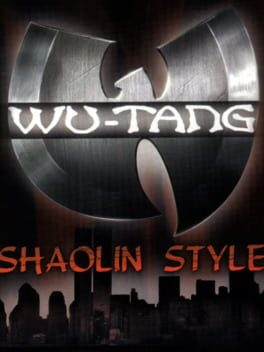
subdirectory_arrow_right Thrill Kill (Game)
▲
3
▼
The game was originally titled "Thrill Kill", but development was soon cancelled due to EA acquiring Virgin Interactive. EA refused to sell the publishing rights to the game until Activision had green-lit an idea for a fighting game based on the rap group the Wu-Tang Clan, which came to be known as "Wu-Tang: Shaolin Style."
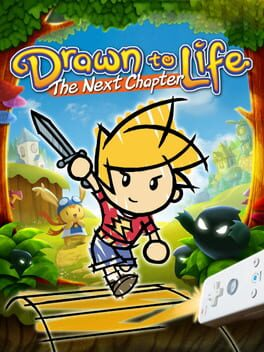
▲
2
▼
 The uDraw was conceived after THQ employees noticed how difficult drawing was with the Wii Remote in the Wii version of Drawn to Life: The Next Chapter, and was originally called the Drawn to Life Pal. Multiple pitches for other licensed Drawn to Life titles in the same vein as Drawn to Life: SpongeBob SquarePants Edition were made, with Marvel Comics, Pixar, Star Wars, and Conan the Barbarian being pitched as examples. However, no Drawn to Life game with uDraw compatibility would ever release, though one uDraw launch title, Dood's Big Adventure, bears a fair resemblance to the series. No reason has been given for the series' absence or why a new IP was made with Dood's Big Adventure instead of using the brand recognition of Drawn to Life, but it may be connected to the controversial ending of the DS version of The Next Chapter and its finality for the core Drawn to Life Raposa universe.
The uDraw was conceived after THQ employees noticed how difficult drawing was with the Wii Remote in the Wii version of Drawn to Life: The Next Chapter, and was originally called the Drawn to Life Pal. Multiple pitches for other licensed Drawn to Life titles in the same vein as Drawn to Life: SpongeBob SquarePants Edition were made, with Marvel Comics, Pixar, Star Wars, and Conan the Barbarian being pitched as examples. However, no Drawn to Life game with uDraw compatibility would ever release, though one uDraw launch title, Dood's Big Adventure, bears a fair resemblance to the series. No reason has been given for the series' absence or why a new IP was made with Dood's Big Adventure instead of using the brand recognition of Drawn to Life, but it may be connected to the controversial ending of the DS version of The Next Chapter and its finality for the core Drawn to Life Raposa universe.
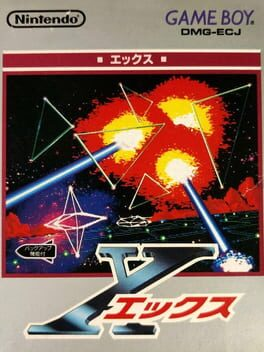
▲
2
▼
 X was originally pitched under the name Eclipse and was developed under the title Lunar Chase. The single-letter rename came at the request of Nintendo president Hiroshi Yamauchi, who contacted director Yoshio Sakamoto early in the morning after playing the game.
X was originally pitched under the name Eclipse and was developed under the title Lunar Chase. The single-letter rename came at the request of Nintendo president Hiroshi Yamauchi, who contacted director Yoshio Sakamoto early in the morning after playing the game.The Lunar Chase name was retained for a planned English localization of the game, which was ultimately scrapped due to fears from Nintendo of America that international players would find the game's presentation and design too complex for a handheld title. Creator and programmer Dylan Cuthbert additionally blamed the cancellation on a presumed lack of interest from retailers in the United States. A prototype of the English version would eventually surface in 2020 as part of the Gigaleak, a massive leak of internal server data from Nintendo. The Eclipse pitch, meanwhile, was released to the public by the Video Game History foundation three years later.
Video Game History foundation article:
https://gamehistory.org/eclipse-the-demo-that-sold-3d-to-nintendo/
US Gamer article:
https://web.archive.org/web/20190210151024/https://www.usgamer.net/articles/dylan-cuthbert-star-fox-game-boy-hacking-feature-interview
ArsTechnica article:
https://arstechnica.com/gaming/2017/10/exclusive-legendary-star-fox-coder-on-series-history-surprise-sequel-launch/
The Cutting Room Floor article:
https://tcrf.net/Proto:X/Lunar_Chase
https://gamehistory.org/eclipse-the-demo-that-sold-3d-to-nintendo/
US Gamer article:
https://web.archive.org/web/20190210151024/https://www.usgamer.net/articles/dylan-cuthbert-star-fox-game-boy-hacking-feature-interview
ArsTechnica article:
https://arstechnica.com/gaming/2017/10/exclusive-legendary-star-fox-coder-on-series-history-surprise-sequel-launch/
The Cutting Room Floor article:
https://tcrf.net/Proto:X/Lunar_Chase
Collection: Kid Icarus
▲
2
▼
Around 2007, Retro Studios designer Jason Behr pitched the idea of a new Kid Icarus title for the Wii to Nintendo, providing little more than an elevator pitch and some conceptual documents. When reached by Unseen64, Behr stated that the original NES title was a childhood favorite of his and a constant source of inspiration. However, Nintendo turned down the offer before it could proceed into creating test assets, as the pitch focused primarily on the idea of reviving Kid Icarus, which ran counter to Nintendo's approach of conceptualizing gameplay elements first and determining a suitable property for them second.
Franchise: Sonic The Hedgehog
▲
2
▼
 Due to the cancellation of the animated series "Sonic Underground", its storyline was left unresolved. However, staff members involved in Archie's Sonic the Hedgehog comics had considered finishing the storyline: writer Ian Flynn had thought about writing a new story that could serve to wrap up where the original series left off, but felt it would be "stepping on the original creatives' toes," and that even if he was allowed to do it the story likely wouldn't see the light of day for at least two years. Originally, "Sonic Universe" issue 50 was intended to be the official epilogue for the show, with a preview cover being released. However, the epilogue was cancelled, and the issue instead featured a story centered around Metal Sonic.
Due to the cancellation of the animated series "Sonic Underground", its storyline was left unresolved. However, staff members involved in Archie's Sonic the Hedgehog comics had considered finishing the storyline: writer Ian Flynn had thought about writing a new story that could serve to wrap up where the original series left off, but felt it would be "stepping on the original creatives' toes," and that even if he was allowed to do it the story likely wouldn't see the light of day for at least two years. Originally, "Sonic Universe" issue 50 was intended to be the official epilogue for the show, with a preview cover being released. However, the epilogue was cancelled, and the issue instead featured a story centered around Metal Sonic.In early 2013, Ian Flynn revealed that material from "Sonic Underground" was off-limits: this was the reason why the epilogue was put on hold. He also stated plans to include the epilogue as part of "Lost Hedgehog Tales", a written document featuring Sonic comic material that will no longer be used, suggesting that the epilogue was no longer possible. In June 2017, any chance of a "Sonic Underground" epilogue by Archie was precluded when Sega announced that the comics produced by them had been cancelled.
Initial statement:
https://web.archive.org/web/20151102122354/http://bumbleking.com/forum/viewtopic.php?p=60017#60017
Sonic Underground off-limits:
https://web.archive.org/web/20150727195129/https://twitter.com/ianflynnbkc/status/293853139898073088
Reason for cancellation:
https://web.archive.org/web/20200531211222/http://www.tssznews.com/2013/10/29/is-the-archie-sonic-underground-epilogue-dead/
Lost Hedgehog Tales:
https://web.archive.org/web/20160404021312/https://twitter.com/IanFlynnBKC/status/510281489292877824
Archie cancellation:
https://web.archive.org/web/20180124222836/http://twitter.com/sonic_hedgehog/status/887809496898088960
https://web.archive.org/web/20151102122354/http://bumbleking.com/forum/viewtopic.php?p=60017#60017
Sonic Underground off-limits:
https://web.archive.org/web/20150727195129/https://twitter.com/ianflynnbkc/status/293853139898073088
Reason for cancellation:
https://web.archive.org/web/20200531211222/http://www.tssznews.com/2013/10/29/is-the-archie-sonic-underground-epilogue-dead/
Lost Hedgehog Tales:
https://web.archive.org/web/20160404021312/https://twitter.com/IanFlynnBKC/status/510281489292877824
Archie cancellation:
https://web.archive.org/web/20180124222836/http://twitter.com/sonic_hedgehog/status/887809496898088960

subdirectory_arrow_right Radar Scope (Game)
▲
2
▼
Some concepts considered for alternate games to use unsold Radar Scope cabinets for if Donkey Kong couldn't be developed were a Jack & the Beanstalk game, a fishing game, a space shuttle construction game due to space shuttles being a hot news topic at the time, and a game about fighting a disease in the human body, based on a movie (likely Fantastic Voyage).

▲
2
▼
According to the British magazine Nintendo Magazine System, before settling on Yoshi's Island characters for Tetris Attack, Nintendo reportedly asked Rare to replace Panel de Pon's fairies with characters from the Killer Instinct series.

subdirectory_arrow_right Star Fox 64 (Game)
▲
2
▼
During the development of Star Fox Adventures, Nintendo considered re-releasing Star Fox 64 for GameCube, likely as a pre-order bonus similar to how The Legend of Zelda: Ocarina of Time was re-released with the first ever release of "Ura Zelda" or Master Quest as a pre-order bonus for The Legend of Zelda: The Wind Waker.
Platform: Nintendo GameCube
▲
2
▼
 Among the files uncovered in a massive 2020 breach of internal server data from Nintendo are documents surrounding Project BB2, a never-released, iQue-branded version of the GameCube for the Chinese market. According to an executive summary from January 30, 2004, this system would've played games off of CD-ROM and DVD-ROM discs rather than the GameCube's proprietary format; consequently, it also would've been compatible with audio CDs and DVD video like the Panasonic Q. Project BB2 was also intended to feature karaoke support, owed to karaoke's high popularity in China.
Among the files uncovered in a massive 2020 breach of internal server data from Nintendo are documents surrounding Project BB2, a never-released, iQue-branded version of the GameCube for the Chinese market. According to an executive summary from January 30, 2004, this system would've played games off of CD-ROM and DVD-ROM discs rather than the GameCube's proprietary format; consequently, it also would've been compatible with audio CDs and DVD video like the Panasonic Q. Project BB2 was also intended to feature karaoke support, owed to karaoke's high popularity in China.

▲
2
▼
Sonic Mars was a concept game that was cancelled for unknown reasons (though it likely had something to do with the limitations and ultimate failure of the Sega 32X), before eventually being reworked into what eventually became Sonic X-treme.
In 2007, two different scripts were leaked for the cancelled game. The first, written by Michael Kosaka, focused on the 3D graphics and notably included elements from the 1993 Sonic the Hedgehog television series (referred to by fans as "Sonic SatAM"), which was airing at the time. The second, written by Don Goddard, focused more on how the game combined 3D graphics with 2D sprites, and dropped the SatAM elements.
In 2007, two different scripts were leaked for the cancelled game. The first, written by Michael Kosaka, focused on the 3D graphics and notably included elements from the 1993 Sonic the Hedgehog television series (referred to by fans as "Sonic SatAM"), which was airing at the time. The second, written by Don Goddard, focused more on how the game combined 3D graphics with 2D sprites, and dropped the SatAM elements.
